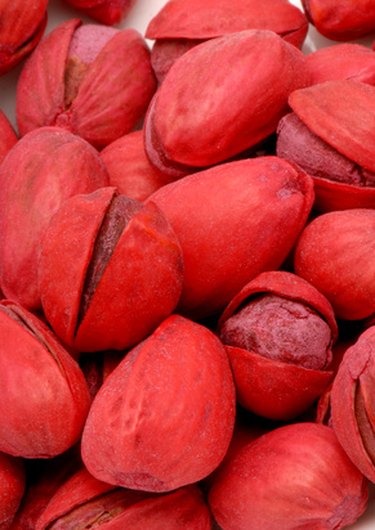
Pistachios grow in California, Turkey, the Middle East, Greece and Italy. In the past, American consumers bought pistachios dyed red or pink. The dye gave the shells a colorful look, but also sometimes stained hands or clothing.
Blemishes
Pistachios are dyed red or pink to hide blemishes on the shells that occur naturally during the harvesting process. This practice started in the 1930s with pistachio importers, who felt that making the nut more attractive would boost sales.
Imitation
Pistachio shells are left in their red husks during the brining process in the Middle East, so the shells have a natural pink color. U.S. pistachio processors intentionally dye the shells to imitate this look.
Natural Shells
Though red-dyed pistachios can still be found in some markets, producers today usually leave the shells untouched. Some also believe the red dye negatively changes the taste of the pistachio.
Industrial Uses
Because of the history of pistachio shells and dye, researchers studied the use of these shells in industrial settings as an adsorption tool. In particular, pistachio shell's adsorption of methylene blue was researched.